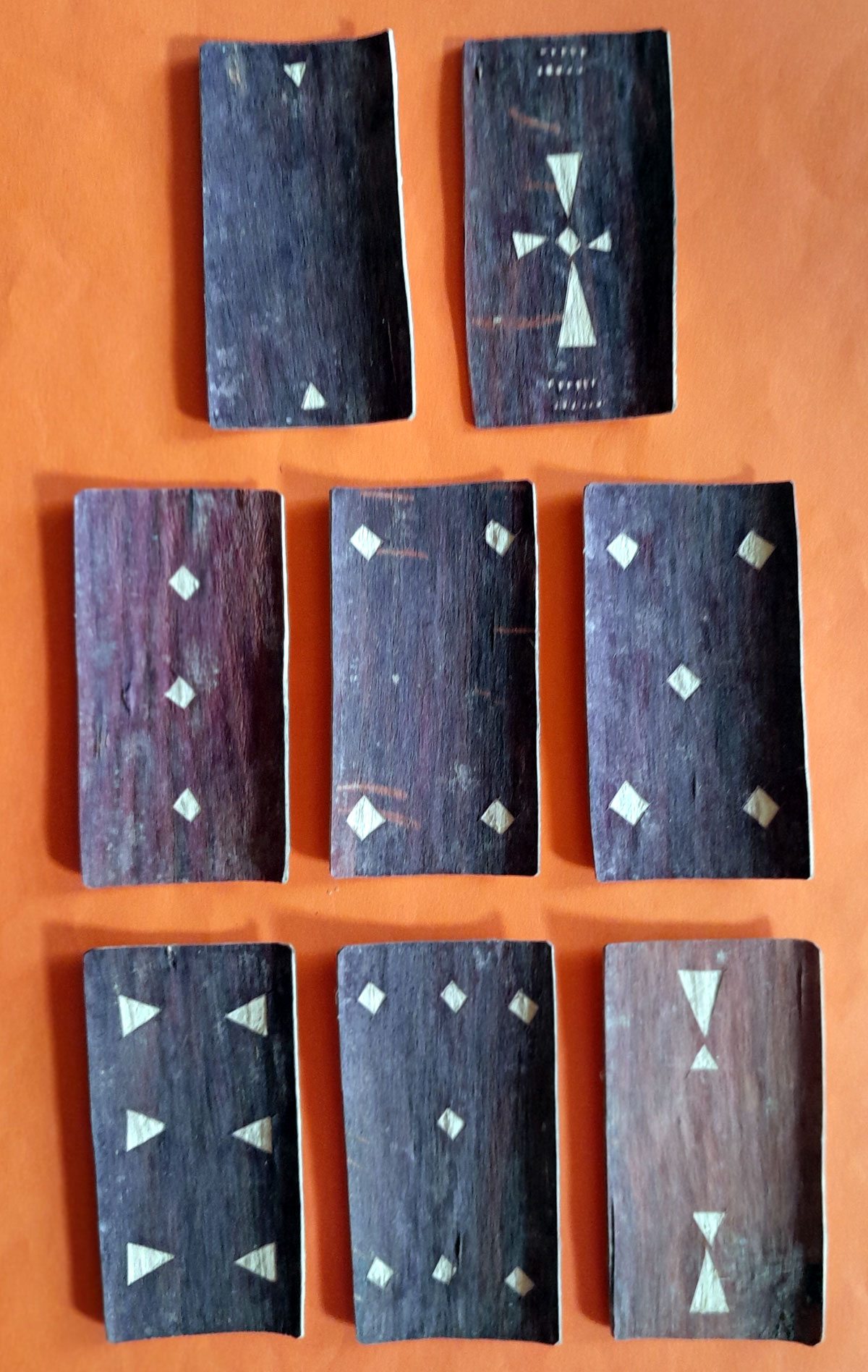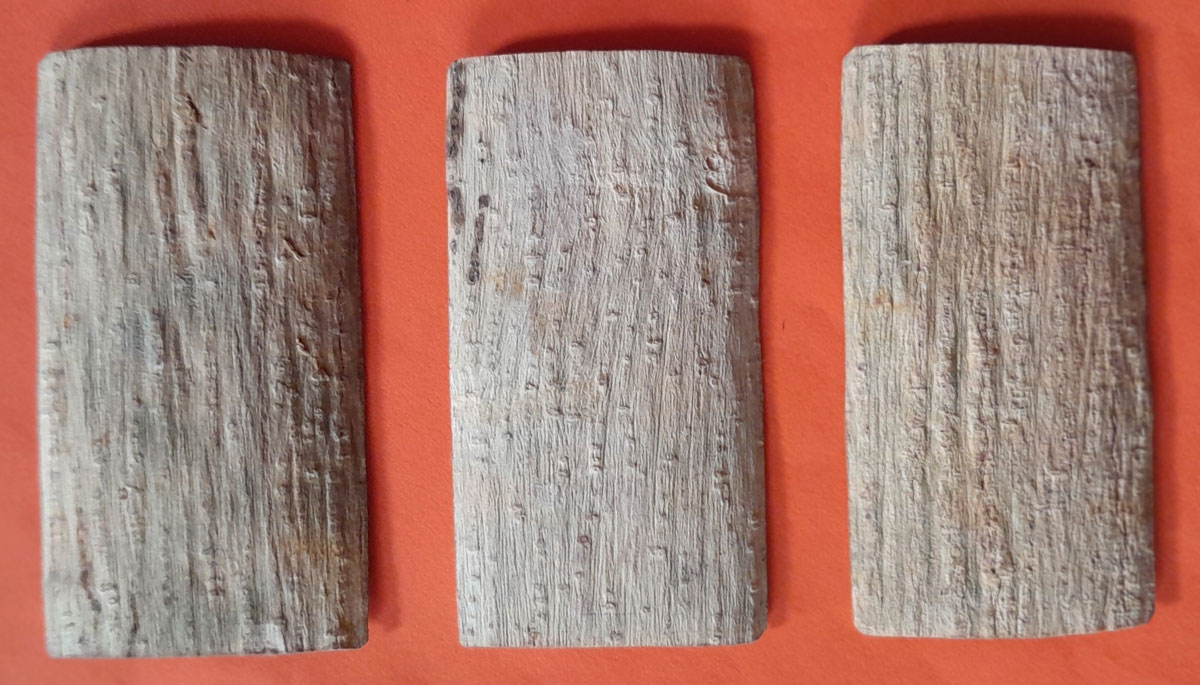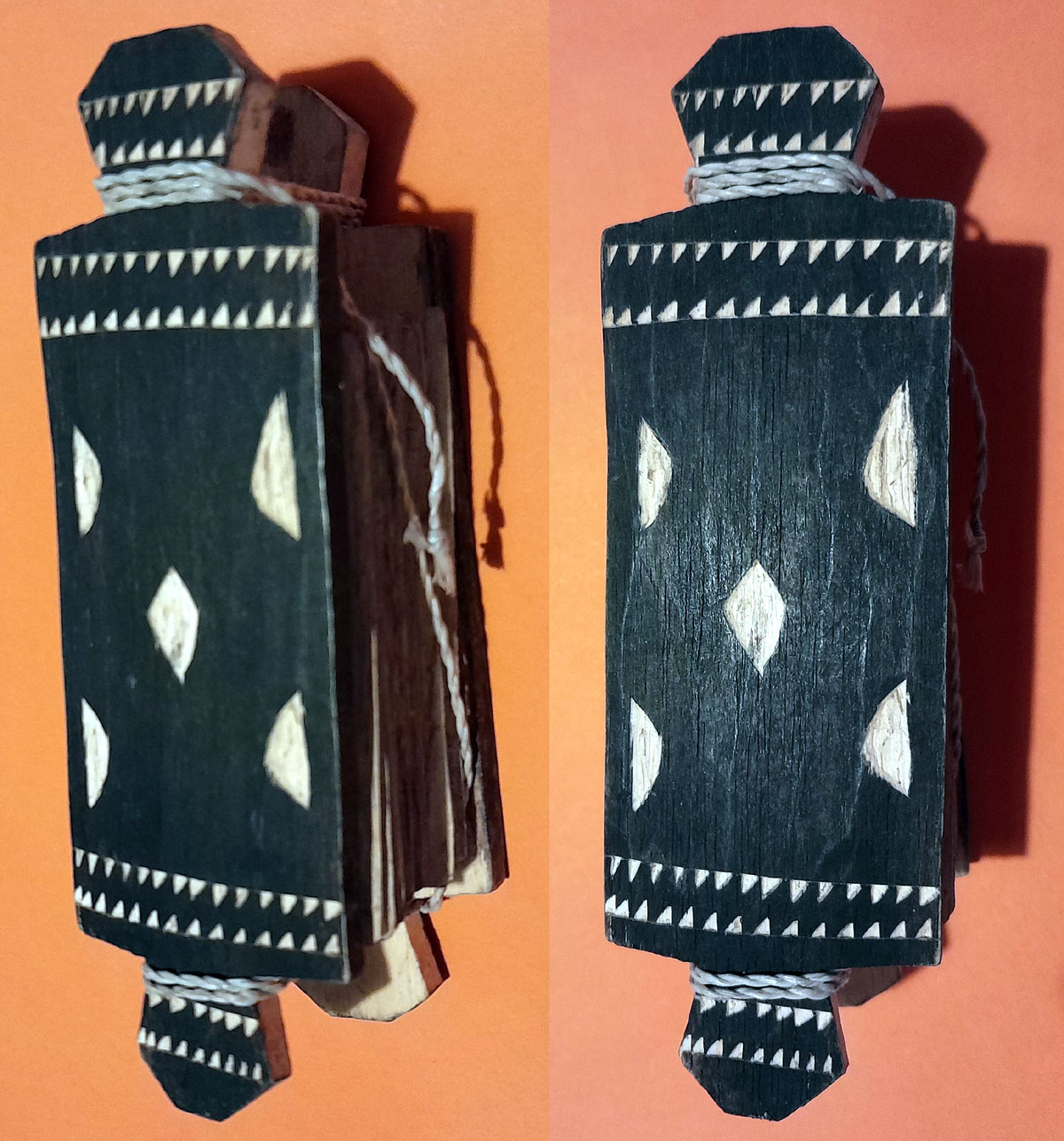Ubo cards
Traditional Ubo cards from the Philippines made from tree bark.
The Ubo are a Manobo sub-tribe who inhabit the more isolated mountains of Southwest Cotabato on the island of Mindanao (SE Philippines). Ubo cards are made from the bark of a tree which they call “kenklem”. They are painted with a black stain from the banana stalk. Once dried, they are engraved using a “kabuhu” or knife.
The game played with these cards is called “siyum-siyum” or lucky nine. It requires two or more players. Each player is dealt three cards. The player whose cards add up to 9, 19, 29 or the sum closest to these numbers wins the game. The Ubos usually bet their property or even their wives.

In a pack, there are 6 of each of the cards in the top row and 2 of each of the others, making 24 in all. Apart from the 2s to 7s, it is not clear to me which card is the 1 and which card is the 8 (assuming that that is what they represent). The backs are plain. There are two wooden end pieces, with the whole set being tied together with string.


Above: Ubo cards, purchased in an Oxfam UK shop, 1990. 24 wooden cards tied together with two wooden end pieces. Size: 35 x 66 mm approx.
Information about these cards was taken from the leaflet accompanying the cards. Some further information can be found at: Manobo, Obo►
Further Reference
Denning, Trevor: Primitive Cards from the Philippines, in ‘The Playing-Card’, Volume XX, No. 1, August 1991, pp 9-12.

By Roddy Somerville
Member since May 31, 2022
Roddy started collecting stamps on his 8th birthday. In 1977 he joined the newly formed playing-card department at Stanley Gibbons in London before setting up his own business in Edinburgh four years later. His collecting interests include playing cards, postcards, stamps (especially playing cards on stamps) and sugar wrappers. He is a Past President of the Scottish Philatelic Society, a former Chairman of the IPCS, a Past Master of the Worshipful Company of Makers of Playing Cards and Curator of the WCMPC’s collection of playing cards. He lives near Toulouse in France.
Related Articles

Ubo cards
Traditional Ubo cards from the Philippines made from tree bark.

Motherpeace Round Tarot
An original and imaginative feminist tarot based on Goddess energy.

Colonial Art
A collection of 53 pieces of art showcasing detailed scenes from early American colonial life.

Le jeu des 7 Familles ’Utuafare
Colourful Happy Families game from Tahiti depicting costumes from different archipelagoes.

Mohegan Sun playing cards
Mohegan Sun playing cards published by Gemaco for Mohegan Sun casino.

Heathen Wars
German-suited ‘Heathen War’ playing cards published by Joseph Fetscher, Munich, c.1820.

Pendleton playing cards
Pendleton playing cards inspired by indigenous American artwork, USA, 2019.

Malam playing cards
Malam playing cards created by Michael Muldoon, USA, 2015.

Costumes des Peuples Étrangers
Costumes des Peuples Étrangers & Jeu d’Or dedicated to young people and likely used for games and fo...

Race Card
‘Race Card’ playing cards published by the Concept Card Co., New Orleans, Louisiana, USA.

Hawaiian playing cards
Hawaiian playing cards in the style of classic Hawaiian wood carvings, USA, 2015.

South American Costumes
Costumes of people of Brazil, Peru and Mexico, with views of Rio de Janeiro on the aces.

Joseph Bardou & Fils cigarette papers
Delightful pack advertising Joseph Bardou & Fils cigarette papers for the Philippines.

Seven Seas Maori Playing Cards
A Gift from New Zealand

African art playing cards
African art and symbolism on playing cards designed by John J. Beckvermit III, USA, 1994.

Pacific Northwest native Indian masks
Pacific Northwest native Indian masks with artwork by Margaret Parrott, USA, 1992.
Trending Articles
Popular articles from the past 28 days


